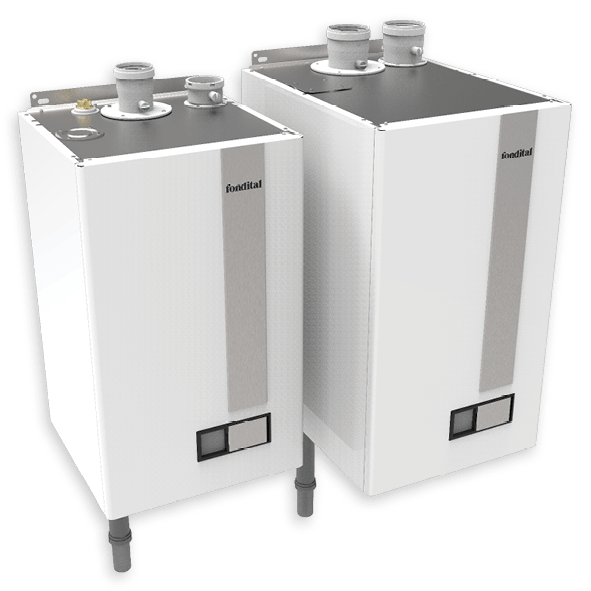Traditional boilers and condensing boilers have the same function: they both transform energy into heat.
The heat is then used for CH (central heating) and/or the production of DHW (domestic hot water).
As far as chemistry is concerned, condensation is the change of state of a substance from gas to liquid. This happens following a drop in temperature, and it is the exact opposite of evaporation.
Condensing boilers and traditional boilers have same characteristics and functions. The difference stands in their energy efficiency.
In fact, condensing boilers utilise a dual heat:
- The heat of flue gases
- The heat of the water vapour produced which is transformed into energy for heating.
The flue gases give off their heat before being released into the atmosphere, also allowing the production of DHW without the need to use other types of fuel.
NOx is the acronym that represents nitrogen oxides. It is important as is helps to understand the quality of the gases and the impact they have on our health and the environment.
Any combustible, such as wood, coal, gas and petrol, produces flue gases while burning. Even boilers during their operation produce NOx-polluting gases, which are one of the main causes of acid rains.
For this reason, boilers are classified in six emission classes, based on the NOx quantities they emit:
- NOx Class 1: less than 260 mg/kWh
- NOx Class 2: less than 200 mg/kWh
- NOx Class 3: less than 150 mg/kWh
- NOx Class 4: less than 100 mg/kWh
- NOx Class 5: less than 70 mg/kWh
- NOx Class 6: less than 56 mg/kWh
This classification allows to identify boilers that have smaller impact on the environment. Moreover, those that meet the NOx Class 6 requirements can be considered “eco-friendly boilers”.
Fondital boilers are low emissions boilers: Itaca CH KR, for example, falls right into NOx Class 6.

n. Reg. Imprese: 01963300171 - EORI/P. IVA: IT00667490981 - R.E.A. BS - 280789 - Capitale sociale: € 60.000.000 i.v. “Soggetta all’attività di direzione e coordinamento ex art. 2497 bis C.C. da parte di SILMAR GROUP S.p.A. - Cod. Fisc. 02075160172”